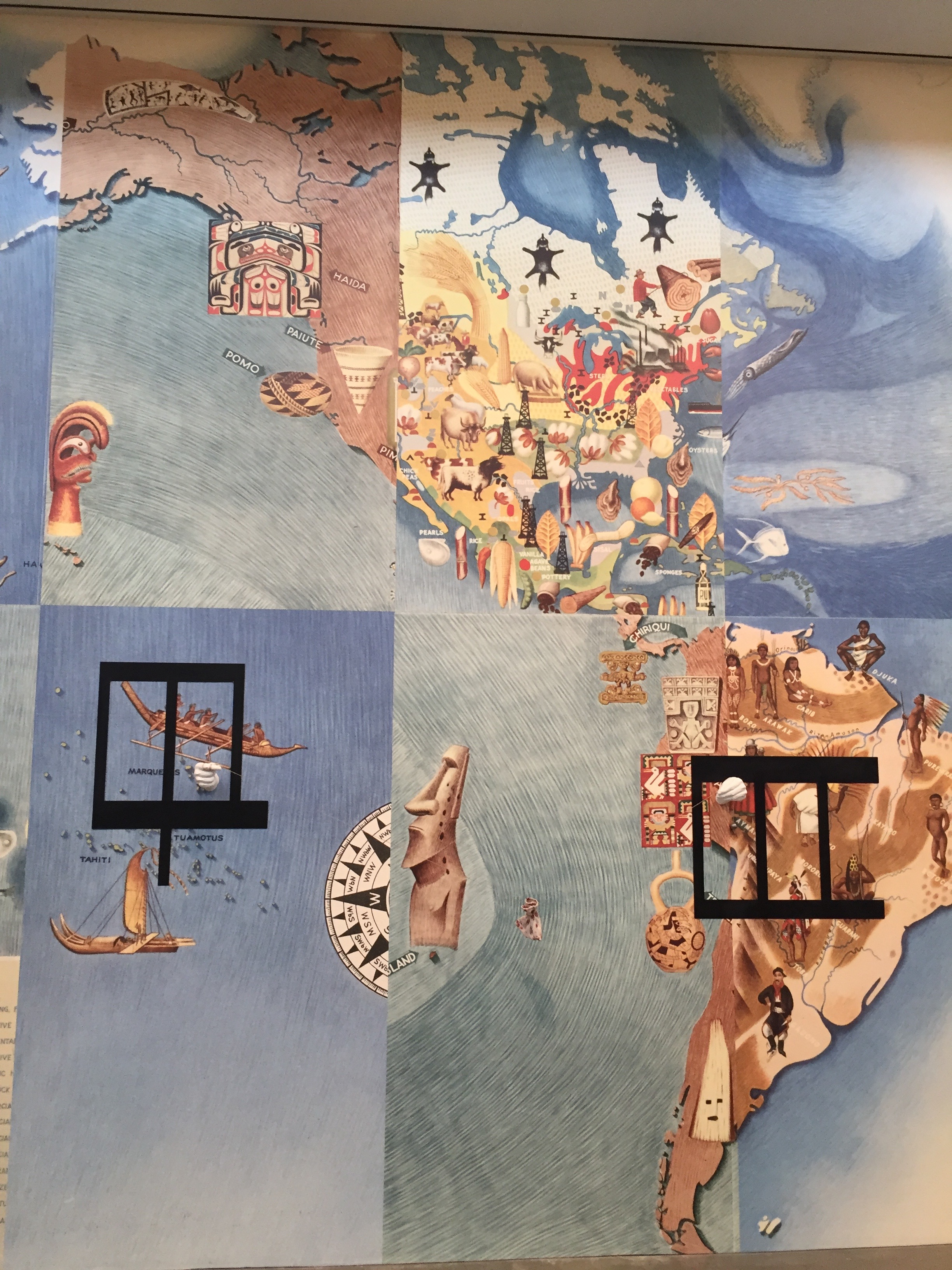Hauser and Wirth Los Angeles adds to the PST mix with its exhibition of Building Materials: Process and Form in Brazilian Art. Time and again I see that more than its neighbors, Brazil was in the avant garde of art, architecture, design and performance. Two examples of Brutalist concrete art especially struck my eye, one by Erika Verzutti and one by Monika Sosnowska that hark back to the the extruded concrete of Frank Lloyd Wright and Neutra but also to the early temples and monuments to the gods. Sosnowska's piece is embedded with door handles--to another life?
PST LA/LA: proyectosLA brings the vibrant energy and many voices of contemporary Latin America to a warehouse
proyectosLA brought the full energy of Mexico City and other Latin American ports to their Union Station adjacent space beginning Saturday for six weeks. The commercial warehouse space is conducive to showing many different kinds of art, from graphic text based conceptual pieces to large scale installations. But the most engaging thing was the confluence of global interchange at the opening reception, transforming Los Angeles into the multi culti world it is, but has not take enough advantage of. I felt as if I was in a square in Mexico City or Morelia where people had gathered to be together to enjoy art, life and each other. Los Angeles is known for its pedestrian-adverse inabilities and this was a day instead of coming together. One highlight was the Peregrina--or female pilgrim--container that the Mexico City design boutique Onora had filled with local, indigenous crafts from all over Mexico. The energy of PST continues and makes me feel that Los Angeles has not only arrived in terms of art, but in terms of its ability to lead the way for our country. Take notice!
Pacific Standard Time LA/LA: Jesse Lerner and Ruben Ortiz-Torres use The MAK Center to explore how Walt Disney's imagery informed--and challenged-- artistic and commercial practice in Latin America
In a perfect juxtaposition of opening events, the MAK Center (at Schindler's modernist house in West Hollywood) reverses the Regen Projects through line (see below) to instead explore the influence of the US culture on Latin America, taking one of our most recognizable exports, the imagery of Walt Disney, and tracing its path through art, artifact, film and text. (Co-hosted by Cal State Luckman--I haven't made it there yet)
Donald Duck, Mickey Mouse and Minnie too, stud this carefully curated exhibition which cannot help but plumb the conflicted mind set of Latinos who for years absorbed our popular culture as we confined theirs to Mariachi Bands and salsa. The art of Walt Disney--and his staff-- has been subjected to a huge bibliography of political commentary over the years and this look at the influence on Latin American artists of the reach of his iconography is a strong addition to the conversation. Jesse Lerner, who walked me through the exhibit, told me they took as their point of departure Saludos Amigos, the film Disney made when he was urged to leave Burbank for South America so that the contentious strike of 1941 could finally be settled. (A documentary on this film has also been made by a Disney family member).
When I interviewed Volus Jones, one of the fine Disney animators who self identified as a "Duck specialist"--and a striker--for my Vanity Fair story on the Ink and Paint department (archived here under Writing/Visual Arts), he himself mourned the post-strike era of fear and highly personal political retribution at the studio. All was not golden during the Golden Age.
Two film highlights of the exhibition: a short film riff How to read Donald Duck Redux on his father Ariel Dorfman's longer documentary by his son Rodrigo about the Disney effect in Chile, and Florencia Aliberti's sly Variations on Alice (in Wonderland).
How our American culture, especially our Hollywood culture, has affected the global practice of artists, filmmakers, writers and creatives of all stripes is a topic that can never have enough exploration. Perhaps the balance of power will shift with the extraordinary outpouring of commentary in PST LA/LA.
Pacific Standard Time: LA/LA: Abraham Cruzvillegas and Gabriel Kuri transform Regen Projects into a testament to global Latino power
Taking as their point of departure the magnificent socio political murals of Miguel Covarrubias, Pageant of the Pacific, which also inaugurated the San Francisco Pan Pacific Expo of 1939, co curators Cruzvillegas and Kuri launch me on my way through the second, even more expansive effort by the Getty and its many partners all over California to expose, inform, distill and highlight our most distinguishing historical feature: the enormous contributions of Latin and South America in our California, American and other cultures.
The first Getty effort, a more domestic one, looked at California's great contribution to modern art through its California artists. This current effort promises to be both exhilarating and documentary, and to be honest, almost impossible to fully absorb: finally, our city, our state, and hopefully our nation, will recognize the enormous importance and influence of the Latino culture on our home shores and in the world.
When I first moved to Los Angeles, I was struck by how little most people had explored Latino culture in California where, as of the last census, they were the dominant ethnic majority(close to 15 million). They had never been to our glorious missions, or many homesteads of our founding fathers and mothers. When they went to Mexico, our closest neighbor, they went to the beach, ignoring the sophisticated majestic cities of Mexico City, Guanajuato, San Miguel, Queretaro, Morelia, Oaxaca, equal to anything Europe has to offer.
Though this has changed slightly, in fact most people I know still have not explored these culturally dynamic resources so close to home.
Now, they have a chance to change all this, and the Regen Projects show is an excellent way to begin. The curators have been clever to sample and spin the Covarrubias murals. And by introducing us to some lesser known modern and contemporary artists (both Latino/a and other) we see juxtaposed in the best possible way how fertile this import/export energy has been and can be.
This monumental PST LA LA effort, with perfect timing, stands up to every Obama-era immigration rollback our President has taken and intends to further push back. How fortunate we are then to get more ammunition with which to confront his mindset. This is a must-see collection of important exhibitions. Those of you in other parts of the US and the world should also make their way. California is leading the country now, both politically in terms of immigration and climate policy. This iteration of PST shows we are firmly in a leadership role in the arts.
Carne Y Arena




From left: Carne y Arena by Alejandro G Inarritu, Picasso's Guernica, Goya's Third of May, Manet's Execution of Emperor Maximilian
Carne Y Arena, Alejandro Inarritu's VR contribution to raise awareness about the plight of illegal immigrants at LACMA is a worthy effort at literally putting us in the shoes of the desperate men, women and children who will do anything, pay anything, to cross the Mexico/US border. The room-by-room entry to the 'desert' where illegals face the undisguised wrath of border agents, the overhead drone of helicopters, and the exhaustion of many miles navigating the desert in the dark is compelling. I understand the impulse to put us there, I understand the impulse to have us share the terror and deprivation. The technology however, is not the most compelling part of the exhibition. Instead, what moved me most was staring into the eyes of the actual models for his VR characters whose film portraits are lined up in a narrow gallery bordered by an actual piece of a border fence as a bilingual scroll of their personal stories runs over their weathered, haunted faces as you exit the exhibition Carne Y Arena, instead of being noted as a tech innovation, should be classified along with Picasso's haunting Guernica or Goya's Third of May about the Spanish resistance to Napoleon, or Manet's Execution ofEmperor Maximilian, all passionate testaments, bearing witness to the powerful overwhelming the powerless. Carne y Arena adds to the conversation of what our country means to us, and the slippage from our founding ideals to those of the current administration. Que Lastima.
Seattle Art Fair

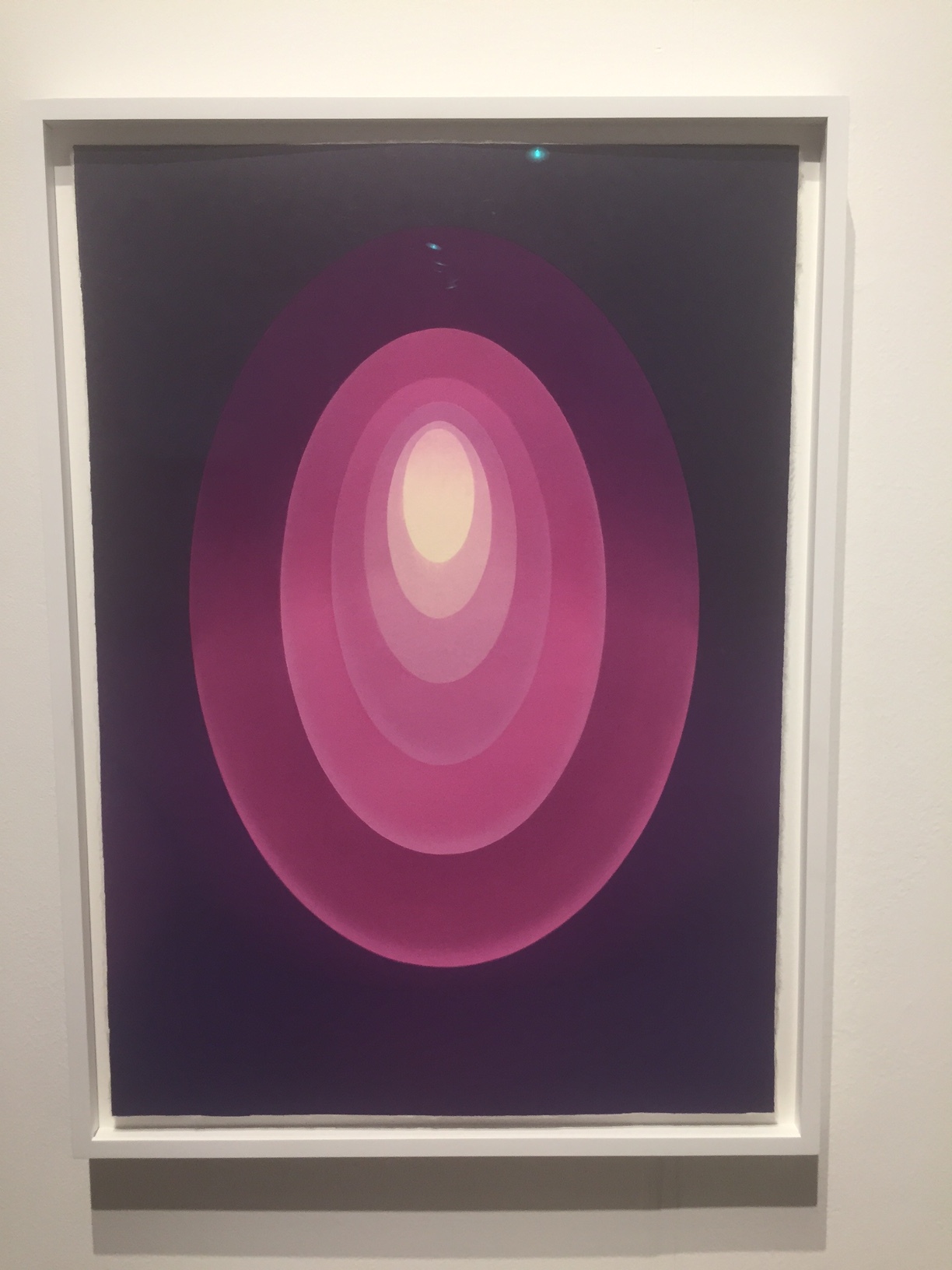





Who knew? Seattle, once known as a northwestern outpost for backpacking and all things Scandinavian has turned into a full fledged international art outpost replete with gallerists hobnobbing over champagne and even New York biggies (Pace, Zwirner,Gagosian et al) having crossed the Continental Divide to show their wares at the newish Seattle Art Fair. Not as much black in Seattle on chic fair goers but plenty of blonde and bling. Lots of local art on display too but some jewel like Morris Graves, Josef Albers, James Turrell as well. Other than Canadian fires which have obscured the city in unusual haze the joint is jumping.
Jeanne Moreau: My Heroine
Jeanne Moreau has died. I drank the Francois Truffaut/Louis Malle Kool Aid. I was in love with Jeanne Moreau as much as they had been when they cast her as their pouty-mouth, emotional anarchist heroines. She was beautiful and intelligent. Fearless. Sexy in the French-est possible way.
But mostly: she was in charge.
In Truffaut’s The Bride Wore Black, Jeanne Moreau is a true femme fatale: with perfect deliberateness—only halfway through do we learn why-- she kills five men and crosses them off the list in her black Hermes agenda. “My life is strewn with emotional obstacles that trip me over and end up becoming films,” she confessed. In Jules and Jim she is the “inventor” of her own life, a woman who can love two men and have them get along with each other. Truffaut said Moreau gave him “the courage to make the film and the courage to see it through”. In Louis Malle’s Elevator to the Gallows and Les Amants (The Lovers), Moreau is again the catalyst for real-life male meltdown. “I knew that if I played the love scenes just as Louis [Malle] wanted, he would love me as an actress but hate me as a woman. I could not play them without betraying him,” said Moreau. Les Amants was the cause of a US Supreme Court case on obscenity, but the court could not agree on a definition of obscene which caused Justice Stewart to write his “I know it when I see it” opinion, one of the most infamous lines of jurisprudence. In Luis Bunuel’s Diary of A Chambermaid Moreau once again controlled the situation through her sexuality. Bunuel studied the way she walked in high heels. Mastroianni fell in love with her but said after she dumped him when their film finished. “ She is always searching for love but leaves victims along the roadside,” he said. Moreau has been unapologetic—“Sleeping with people is one of the best ways of getting to know them”.
In 2011 when I was working on a post on the 50th anniversary of Jules and Jim (reprinted below) I reached out to her to try to interview her. I got back the following message:
“I am very sorry but I am working on 3 projects and really my mind is not going back to the past. Best regards, Jeanne Moreau”
All the more reason to remember her today, not only for her extraordinary cinematic performances, but also for the forward-thinking-living person she was until the end of her life.
Jules and Jim -- and Catherine
"You said to me: 'I love you.' I said to you: 'Wait.' I was going to say: 'Take me.' You said to me: 'Go away.'" A woman's voice -- urgent, husky and siren-like all at once -- is heard over a black screen. Suddenly cheerful music reveals a gay turn-of-the-century world.
Bastille Day
I could not think of a more auspicious date to launch The CultureZohn website. Bastille Day, and France in general, has enormous importance in my life and in my work and I’m honored to contribute a tiny bit to the spirit of revolutionary independence it stands for.
From Sur le Pont d’Avignon in first grade to grand battements at the School of American Ballet in fourth to Jean Seberg in Breathless in college to the French Culture Services in NY, to Picasso at MoMA, to Costa Gavras in Hollywood, France, its people, its language, its customs and its culture have been a driving narrative to my life.
The thought of Donald Trump today in the reviewing stands on the Champs does not fit with this progressive narrative but I forgive Macron for his all-too-generous invitation as I am happy to see the very proud French people feeling more hopeful after the terrible events of the last few years.
Grab a glass of rose, toast La France, and then settle back and enjoy the many pearls of the CultureZohn.
Ode to the MoMA Philip Johnson staircase
The most important, the most evocative, the most sensational part of the MoMa construction project now underway (Diller Scofidio replacing two or three iterations of previous MoMa architecture) is the fact that one can now actually access the galleries in the old fashioned way, through the marvelous marble staircase. The elevators were very slow when I was, I think, the first MoMa intern in the film stills archive and then the photography archive, and I used to run up and down the stairs ferrying photos or memos, cutting through the galleries past Guernica and Demoiselles, Diane Arbus and the Italian designers. I miss the Johnson building the same way I miss the extraordinary curators who held sway at the time, John Szarkowski, Emilio Ambasz, William Rubin et al. This to me is the essence of the real MoMa, one that is now on display primarily through the extraordinary collection rather than the hodge podge of architecture.
Naoshima, Japan





The prince of museum islands, the Ando-centric Naoshima has a truly first class hotel. Most surprising, it feels like Hawaii with lovely beaches, a tropical breeze and little communities that spring up behind the hills. Naoshima is very organized compared to Teshima and is worth a night, though I found the hotel restaurant pretentious. Better to eat in town and shuttle back.
Teshima, Japan



It's impossible to get to all three Museum Islands in one day, and lord knows, I tried. The ferry and boat schedule make it impossible if you want to stay on one of the islands at night, probably Naoshima. But, you can get to two out of the three. I chose Teshima so I could see the Sanaa museum there and have lunch at the Shima Kitchen and hike around this less developed of the art site destinations. Without a van or bike, I was forced to hitch, not a bad solution.
Kyoto, Japan

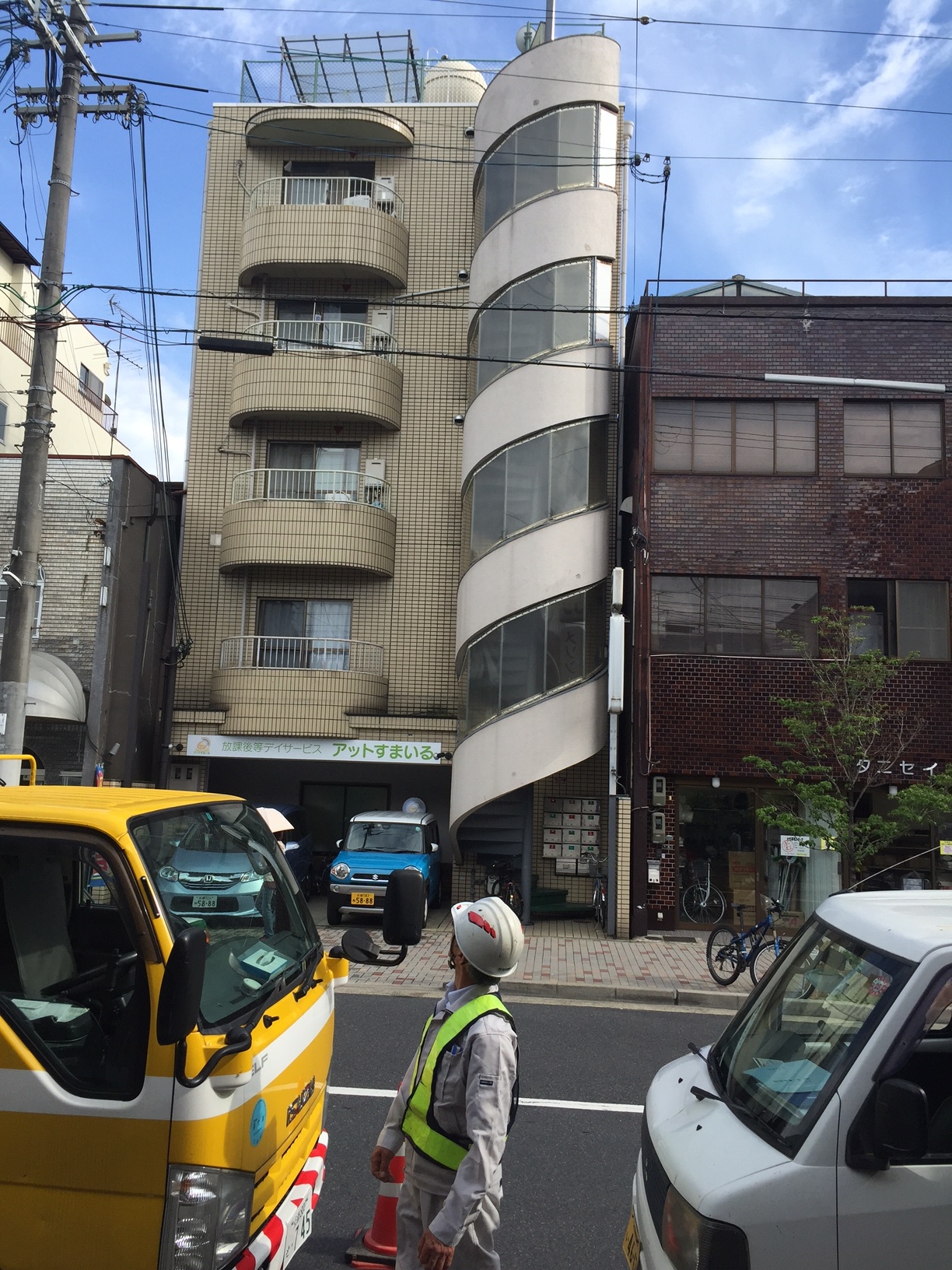

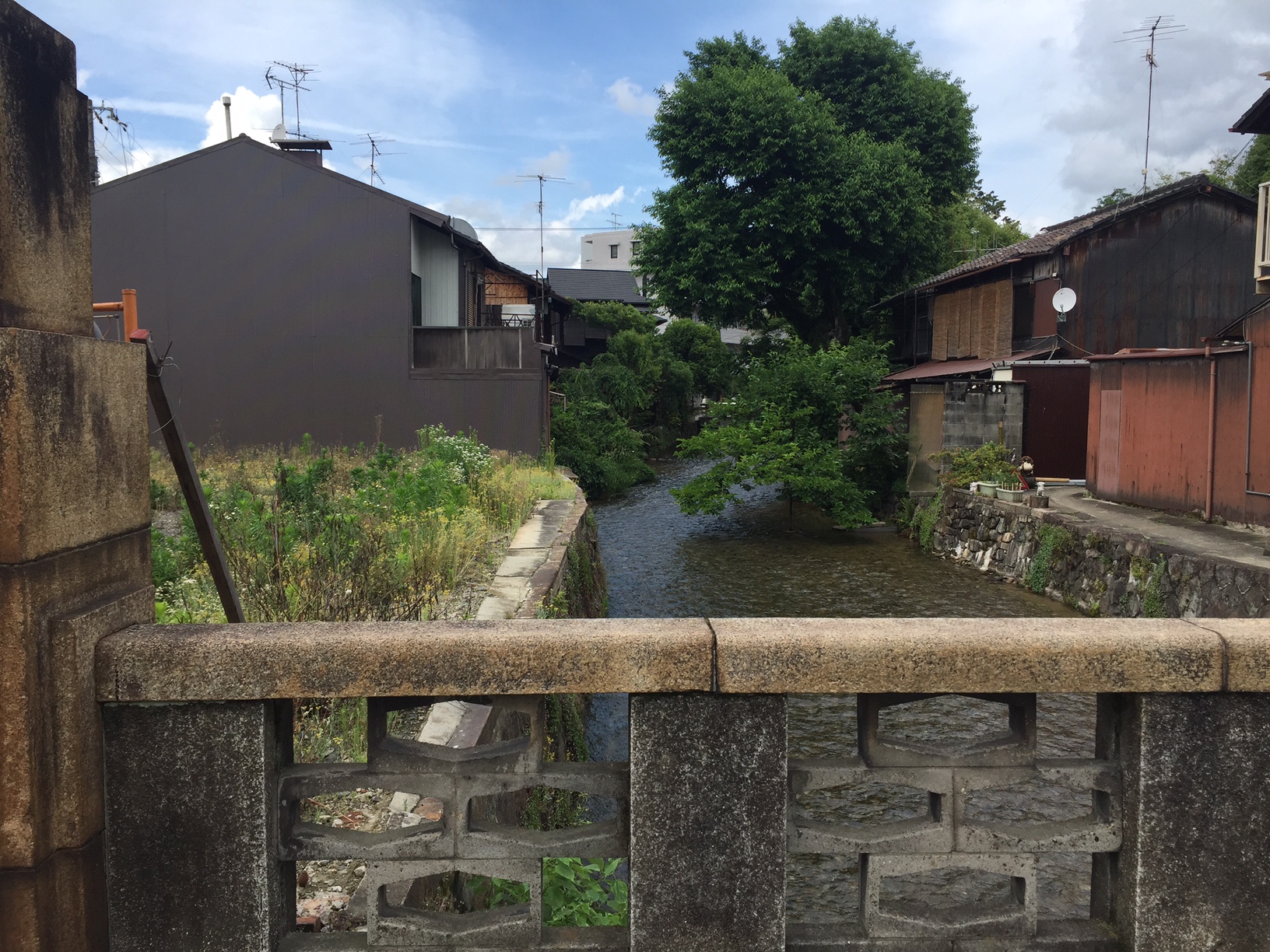
For my money, after what seemed like days of imperial-ness and temples, it was the back streets and alleys of Kyoto that held sway. Kyoto has a few more mid century holdovers as it was not bombed like Osaka and Tokyo during the war.
Tokyo Bunka Kaikan

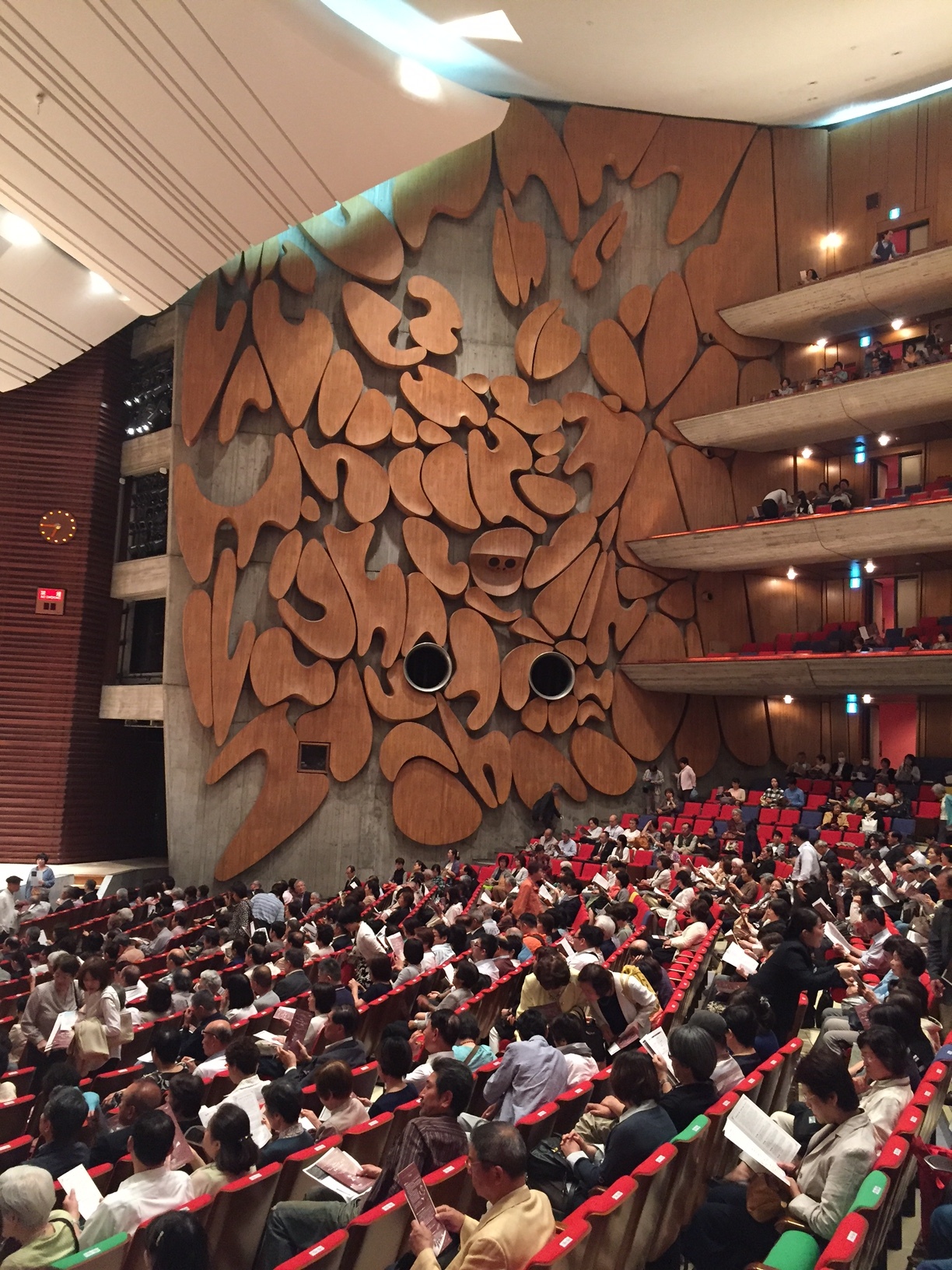


Directly across from the Le Corbusier masterpiece museum in the Ueno Museum district sits a much overlooked and truly thrilling symphony space, one a local patron described to me as "the people's concert hall". Built in 1961 by architect Kunio Maekawa, it is a paradigm of mid century wooden architecture replete with acoustical elements that look like Josef Albers. I heard not just one but two Beethoven symphonies and was, I think, the only non native in the packed 2300 plus hall.
Tokyo Design
Tadao Ando's 21 21 Design Sight Museum had a whirligig of a VR sports exhibit which weighed, tossed and balanced visitors to the museum, only one of so many museums Ando has done in Japan (and elsewhere). His concrete aesthetic has become a signature of permanence which does not always jibe with the contents.
National Museum of Tokyo
The worldwide sensation of Japanese artist Kusama does not abate. The Hirschhorn Museum had its highest numbers ever and the exhibit which will hit LA soon will surely compete with Rain Room for foot traffic. These trees adorning the foot path to the National Museum of Tokyo were as far as I got on the last day of the exhibit as the lines were historic, and in truth, I am less and less inclined to wait on line for art.
Ropponghi, Tokyo
Ropponghi is a delight of fashion and tasty treats. The design aesthetic of Japan reaches from the most pedestrian to the sublime. With the perfection comes rigidity however.
The 2017 Pritzer Prize




The Pritzker Prize for Architecture--the “Oscar” of architecture for achievement for a body of work and generally conceded to be a bellwether of still more architectural promise--this year was awarded at the Imperial Guest House in Tokyo in the presence of the Emperor and Empress and distinguished guests to a modest, affable collaborative of Catalonians--Rafael Aranda, Carme Pigen and her husband Ramon Vilata. The professional ménage a trois whose practice was described as having much in common with a Japanese aesthetic of harmony with nature, refer to themselves as “six hands, one voice” who communicate in “spoken jazz”. The images of their low-rise kindergartens, senior citizen centers, restaurants and sports facilities stand in marked contrast to the soaring towers and twisted confabulations of some of the work of previous laureates. At a dinner following the ceremony, I was seated next to Shigeru Ban whose Aspen Art Museum is probably his most well known work in the US and whose affection for the US may derive from his Sci Arc and Cooper Union formation. His fellow Japanese laureates Tadao Ando and Toyo Ito were seen posing for photos together. Ito mentored the Sanaa principals whose work is sprouting not only in New York (New Museum) and Connecticut (The River) but also in Teshima, one of the museum islands of Japan, Kanazawa, at the Vitra campus in Germany. Ando's Naoshima Island project is now the art world destination in Japan and may be the first time I actually slept in a museum.
Dizzying Heights
Dizzying heights | Art | Wallpaper* Magazine
In theatres now, a documentary by Magnolia Pictures celebrates the life and oeuvre of the late Chris Burden The artist behind the Instagram darlings Urban Light and Metropolis II at the Los Angeles County Museum of Art (LACMA) was once not so photo-friendly, as a new documentary on the late Chris Burden reveals.
Florine Stettheimer at the Guggenheim
The Florine Stettheimer show Painting Poetry at the Guggenheim Museum is charming, delightful and goes down easy. Stehttheimer's sinuous, colorful drawings and paintings which take as their subject matter the very elite world of her sisters, shopping, picnicking, dancing, opera and famous friends give insight into an upper class woman who straddled the line between fine art and illustration. At a panel about the artist last night, this artist was recognized as culturally undervalued as someone who created meaning through social process. Artist Cecily Brown who said at first Stettheimer was something of a guilty pleasure then studied the work and understood the work to be more like the Breugel jigsaw puzzles she favors for their crowds and sub texts. "She leads your eye on in a joyous dance...in the electricity and intense passages between things."
Rei Kawakubo at The Met
After all is said (too much) and done, the Rei Kawakubo show at The Metropolitan Museum of Art, New York is really spectacular. The lumps and bumps, the holes, the ruching, gathering, tucking, coloration and cut makes you understand that Abner Elbaz and now everyone else could not have helped by be influenced by this march-to-her-own-drum original artist. We are now used to seeing pregnancy bumps in full display, but Kawakubo puts them everywhere but. Her hole-y designs reminded me of Lee Bontecou's wall sculptures. Misplaced sleeves, shoulders, belts, stitches combine to make you feel her restless, original energy. The hair treatments by Julien d'Y's are another delight of stiffened towers, urethane curls, Louis XIV wigs and helmets. I had a smile of wonder and delight throughout. Though the natural resting place of these garments is in a museum show, if you manage even a small protuberance or mis match even one thing next time you get dressed it will be in homage to this unique and original talent. Here's how you feel when you leave: tame and small and risk-adverse and determined to shake up your life and be bold.

















